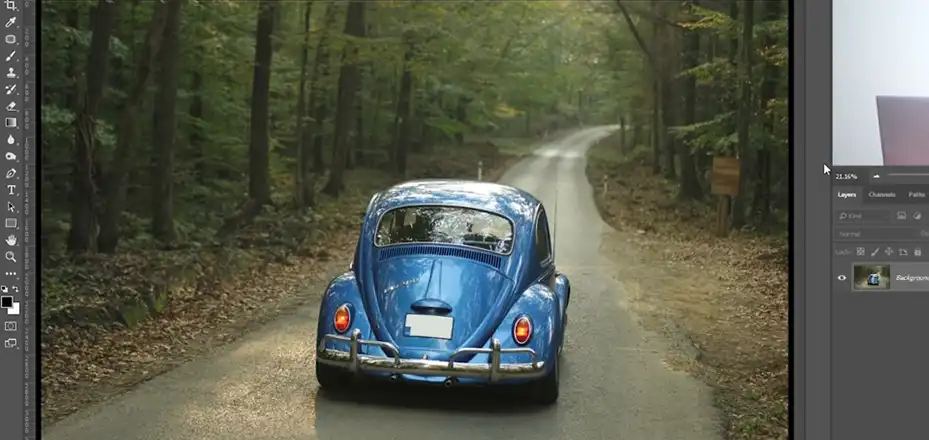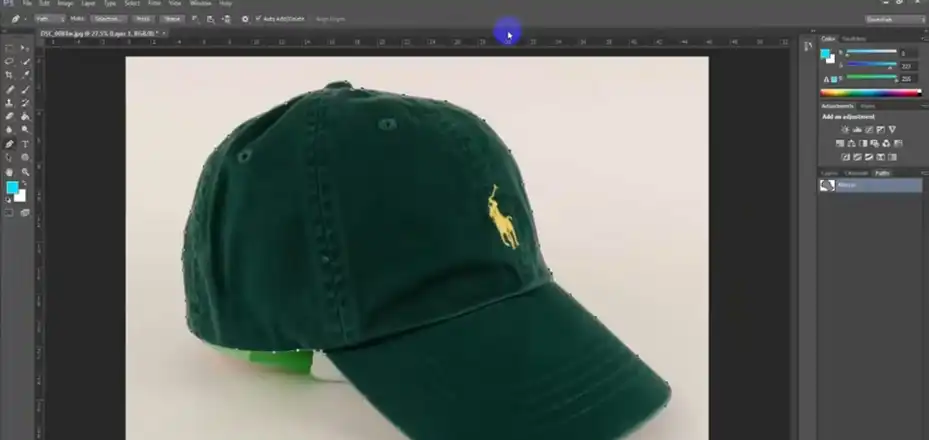So you wanna know why we bother clipping stuff when making montages? I feel ya. Whenever we grab photos to mash together, there’s always junk around the main focus, like messy backgrounds and junk. If we just tossed it all in the blend as-is? Yikes, hot mess. So we put in the sweat to snip out the key pieces first. Isolate the prime cuts, ya know? Gives us artists way more control over the final pic ’cause we ain’t wrestling with nonsense bloat. Makes stitching it all together smooth too, instead of a visual trainwreck laughs. Stick around as I break it down so it makes sense!

Role Of Clipping in Creating Montage with Composite Images
Clipping plays a crucial role in creating seamless and realistic montage composite images by precisely defining the visibility of poszczególnych elementów. It acts like a digital mask, controlling which parts of an image are shown and which are hidden, allowing you to seamlessly integrate different elements into a cohesive whole.
1. Precise Element Isolation
Clipping acts like a digital scalpel, letting you isolate elements with pinpoint accuracy. Want to add a person from a busy street into a serene park? Clipping cleanly removes the unwanted background, leaving just the person ready to be placed in the new scene. This precise isolation avoids awkward bleeding of the old environment into the new, making the integration much smoother.
2. Non-Destructive Editing
Imagine you painstakingly cut out your element, but then decide the composition needs tweaking. Clipping lets you adjust the mask anytime! You can refine the edges, try different placements, or even switch elements without affecting the original images. This flexibility frees you to experiment and perfect your montage without fear of ruining your hard work.
3. Layering Control
Clipping gives you precise control over how your extracted element interacts with the background. You can choose to fade the edges for a smoother blend, create sharp outlines for emphasis, or even mask specific parts for creative effects like double exposures. This layering control allows you to fine-tune the relationship between elements and add depth and intrigue to your montage.
4. Creative Possibilities
Clipping isn’t just about basic cut-and-paste. It unlocks a world of artistic possibilities. Want to create a silhouette by masking everything but the outline? Or add a ghostly figure blending into the background? Clipping is your tool for these magical effects, letting you push the boundaries of your montage and tell a compelling story through imaginative visuals.
So, when creating montages, remember clipping as your trusty companion. It helps you isolate elements with precision, experiment with their placement and interaction, and even conjure up creative effects, all while giving you the freedom to adjust and refine your masterpiece. With clipping at your side, building seamless and captivating composite images becomes a whole lot easier and more enjoyable!
Benefits Of Pre-Montage Clipping
Taking the time to clip key graphic components before bringing everything together into the final artwork has multiple advantages:
Backgrounds/Details Eliminated Beforehand
As discussed previously, clipping out the subjects ahead of time automatically eliminates all the extra environmental clutter, edges, backgrounds, and incidental details.
Rather than this visual noise getting unintentionally brought along into the composite, it gets removed right off the bat during the isolation process.
Cleaner Look, More Cohesion
With those distracting elements taken care of, the clipped subjects can stack together into a much cleaner, tighter montage look.
The final artwork appears more graphically streamlined and cohesive since the isolated components integrate more smoothly without background clutter getting in the way.
Montage Elements Integrate More Naturally
Similarly, the clipped visual motifs blend and composite together more naturally without having to force disparate background elements from multiple images to fuse.
Getting rid of that messy transitional stitching in favor of clean delineation between isolated subjects makes their graphical combination more intuitively organic.
More Control Over Composite In Background Transitions And Subject Placement
Pre-clipping also provides greater adaptability for the artist when building out the montage frame. With cleaned-up graphic components available to work with, background transitions and subject positioning can be handled with more finesse.
Custom backgrounds can be created or collaged knowing that the layered subjects have defined edges. Their placement also gets freed up compositionally without having to work around busy pre-existing backgrounds.
The Issue With Unclipped Elements In Montages
Montage art is all about bringing multiple images together into a cohesive composite. But often, the original images contain extra backgrounds or details around the main subjects that can cause issues.
Original Images May Have Extra Backgrounds/Details Around Main Subject
The images used to create montages are usually photographs or other pre-existing media. When capturing these original shots, there is often additional “noise” in the frame surrounding the main focus point. This could be environmental clutter, backgrounds, or incidental details that are not relevant to the final composite.
For example, an image of a person may include walls, trees, or other elements framing them that are not needed in the montage. Or a shot of an animal may have blades of grass, fences, or bushes encroaching on the edges.
These Details Get Incorporated Into the Final Montage If Unclipped
The issue arises when bringing multiple images into a montage without first “clipping” or isolating the main subjects. Any extra backgrounds or details from the original images then get incorporated into the final composite as well.
This means all the environmental clutter and irrelevant information is carried into the montage artwork. These unclipped elements from various source images collide and create a disjointed, busy appearance rather than unifying cleanly.
Can Make Montage Look Cluttered And Composite Less Natural
Having all these extra bits and pieces combined into one frame makes the montage look messy and chaotic. Too many competing background elements get mashed together.
The composite then appears confusing to the eye instead of natural, with odd transitions between subjects or settings where images meet. This visual clutter undermines the harmony necessary for a successful montage. Clean isolation and integration of the core elements are what enables the “whole” artwork to come together.
The Clipping Effect
In summary, cluttered backgrounds make montages messy. By clipping or isolating subjects first, artists gain creative control when piecing visuals together. Eliminating inessential details upfront allows central motifs to combine poetically within a graphic whole. This streamlined cohesion simply can’t emerge from disorder and distraction. Ultimately, mindful pre-montage clipping liberates elements so their expressive harmony can take center stage.
FAQs and Answers
Q: What is clipping in the context of creating montages?
A: Clipping refers to isolating the main subject or focal point from its background in an image before bringing multiple images together into a montage composite. This involves cutting out and separating key visual elements from clutter or edges around them.
Q: Why is pre-montage clipping important?
A: Clipping graphics before compositing a montage eliminates visual clutter and allows for tighter, cleaner combinations. It also gives the artist more control over subject placement and background transitions.
Q: Does clipping have to be done by hand?
A: No, there are various software tools available that can automate parts of the clipping process through rotoscoping, masking, or siloing techniques. But hand-clipping allows for precise custom isolation.
Q: Can Icreate a montage without any clipping?
A: It’s possible but likely to result in a disjointed, messy composite from multiple backgrounds colliding. Lack of clipped edges means less control too.
Q: Does clipping improve montage harmony?
A: Yes, by graphically isolating relevant subjects into a cohesive whole without visual clutter undermining and distracting from their poetic interplay.

